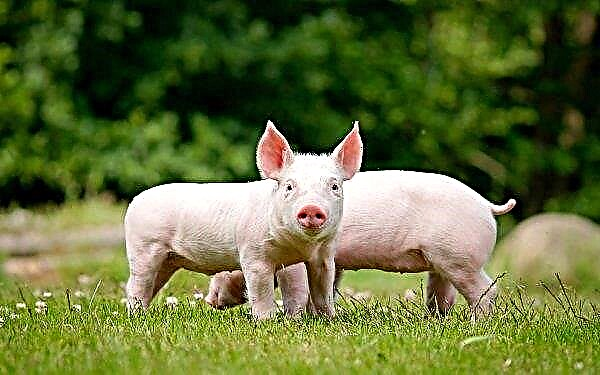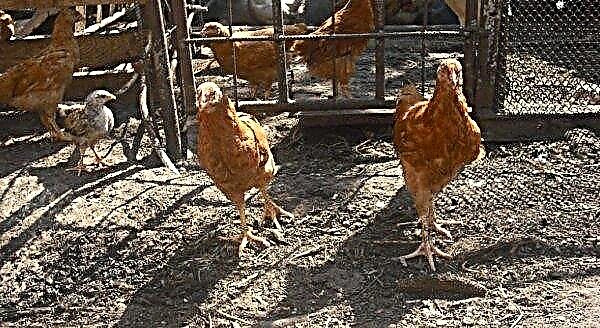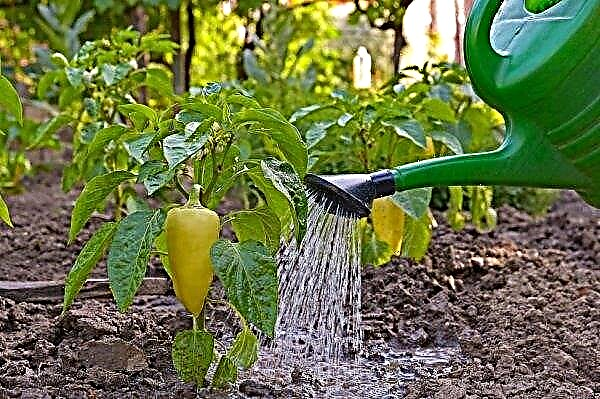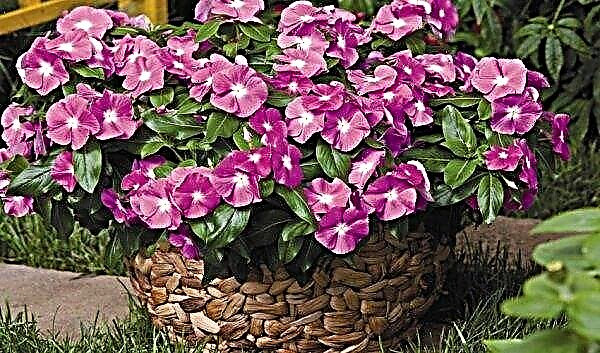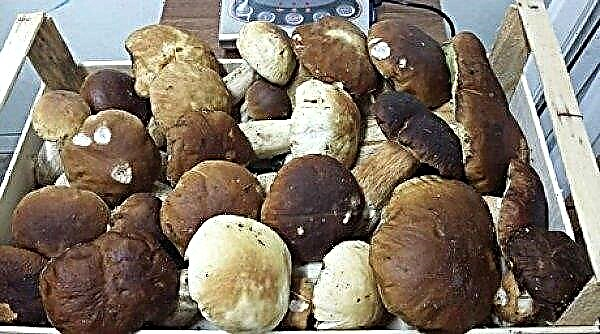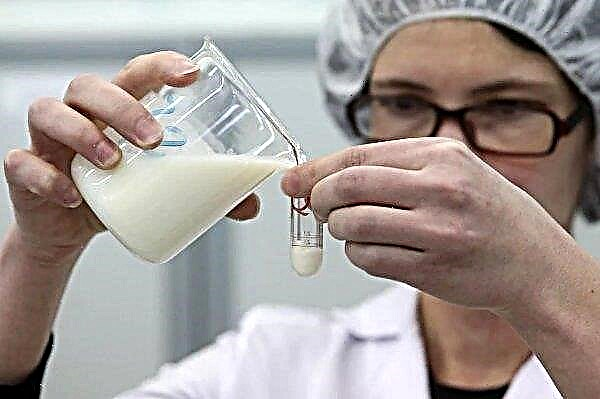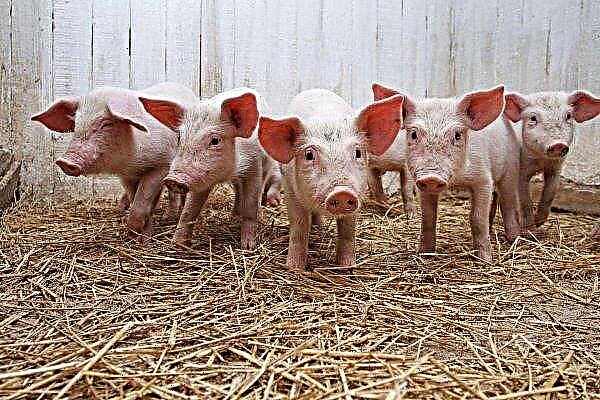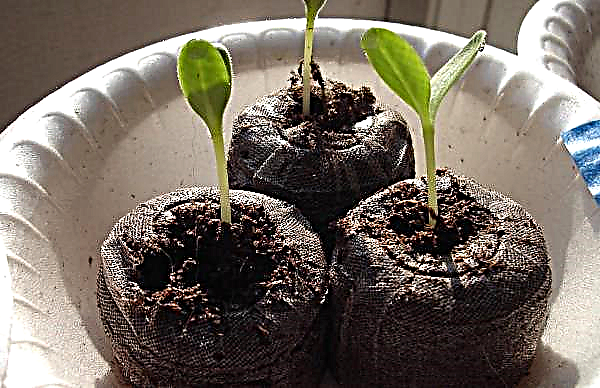Among table root vegetables, carrots are the most common. And in the variety of varieties, one of the most famous is Nantes, which has a number of varieties. One of them, carrots Nandrin F1, we will talk about in this review.
Nandrin carrots: description and characteristics of the variety
Nandrin F1 is a variety of Nantes carrots. It is an early ripe hybrid. Root crops of Nandrin are ideally cylindrical, with a rounded end and apex. The pulp is reddish-orange with a sweet taste and a pleasant crunch. The root crop is durable, does not crack.
Technical characteristics of the variety Nandrin F1:
- ripening: early, in 75-100 days;
- growing area: Ukraine, Belarus, Moldova, Russia;
- cultivation features: grows well in lighted areas with loose fertile sandy loam or soil with a deep upper layer;
- crop rotation: it is recommended to plant after cabbage, tomatoes, onions, cucumbers, early potatoes;
- sowing pattern: 4 × 15 cm;
- seed sowing depth: 1-2 cm;
- sowing rate: 1–1.6 g per 1 m²;
- disease resistance: high.

Crop Characteristic:
- productivity: 4.6–6.7 kg per 1 m²;
- weight of one root crop: 50–165 g;
- diameter: 3-5 cm;
- length: 16–20 cm;
- flesh: bright orange;
- form: cylindrical;
- texture: smooth, does not crack, durable;
- commodity properties: high;
- palatability: sweet, tasty;
- sugar content: 7.9 on the Brix scale.
Commodity root crops are aligned in size and shape, suitable for their own consumption and for sale. Due to their good quality, they can be stored in winter, which extends the consumption of fresh carrots until early spring.
Did you know? No one knows for sure when people started eating carrots. The first mention of its medicinal properties has a 5-thousand-year history.
History of the variety
Most sources indicate the Dutch origin of the Nandrin F1 variety. The Dutch company Bejo zaden is called as the originator. Unfortunately, data on this variety are not available in the company catalog. The originator is probably another manufacturer. As for the purpose of selection, in the varieties of Nantes carrots, it goes in the direction of increasing the size of the root crop and improving its juiciness and sugar content.
Planting region and ripening dates
Carrots are cold-resistant crops, therefore, can be grown in any climatic zones. Nandrin ripening occurs 75–100 days after planting.
The unique property of its root crops is that you can collect them at any time. Their taste is at a maximum both at the beginning and at the end of development. And for eating it is not necessary to wait until the root crop reaches its maximum size.
Variety Productivity
From 1 m² you can collect from 4.5 to 6.7 kg of delicious root crops. Yields are affected by soil quality. Since carrots are the root of the plant, for weight gain it needs loamy soils with good drainage and timely top dressing.
Disease resistance
Resistance to diseases determines the product characteristics of products. In particular, its stubbornness. In the study for resistance to alternarirosis and fusariosis, the variety showed 100% preservation of root crops.
Did you know? The first written sources mentioning carrots speak of white and purple varieties, not orange.
Pros and cons of the variety
- Grade advantages:
- high storability;
- good marketability and taste;
- precocity
- the possibility of eating at any stage of cultivation;
- unpretentiousness to growing conditions and climate;
- the possibility of growing in any climate zone;
- high resistance to diseases.
No flaws were detected in the variety.
Agrotechnics Nandrin cultivation
Breeders recommend: before making a choice in favor of growing one or another variety, it is necessary to determine the technological possibilities for growing. A key feature of the first generation hybrids is that high performance can only be achieved with the exact observance of the technology for growing a particular variety.
To grow Nandrin, you will need a lighted sunny area with loose fertile sandy loam. Sow the seeds of carrots after cruciferous or solanaceous. Sowing is carried out in rows with a distance between them of 15 cm and a distance between individual specimens of 4 cm. The sowing rate of seeds is 1–1.6 g per 1 m². Sowing depth - 1-2 cm.
Optimal growing conditions
Suitable growing conditions guarantee a good yield.
The following recommendations must be observed:
| The soil |
|
| Predecessor cultures | Cabbage, tomatoes, corn, barley |
| Seedbed preparation | Deep digging of the soil since autumn |
| Sowing | April to June |
| Temperature for growth and development | +15 ... + 20 ° С |
| Moisture requirements | Undemanding, but a higher yield is obtained with regular irrigation. |
| Fertilizer requirements | Carrots react negatively to organic fertilizers, so it is recommended to use mineral. |
Landing time
Any regions of Russia, Ukraine, Belarus, Moldova are suitable for cultivation. Carrot seeds germinate at +3 ... + 5 ° C and can tolerate soil frosts. In this regard, sowing can be carried out immediately, as soon as the soil warms up - starting in the second half of April.
Important! Plant extra batches of seeds every 3–4 weeks to produce multiple crops.
Choosing a place and preparing the garden
Comfortable soil for carrots is loose, without debris and lumps, loamy or sandy. Planting is carried out in early spring to avoid summer heat, from which the roots can be deformed.
Once the soil is dry enough to work, loosen the bed for sowing well. Check drainage. The roots of carrots can rot if the moisture stagnates. The acidity of the soil should be moderate, not acidic and not alkaline - pH from 5.8 to 6.5. Add garden lime to the garden 3 weeks before rooting, if you need to lower the acidity level.
If the plot is fertilized with manure, carrots can be planted on it no earlier than 3 years after its application.
From fertilizers contribute (per 1 m²):
- superphosphate - 40-50 g;
- potassium chloride - 40-50 g;
- ammonium nitrate - 20-30 g.

Seed preparation and planting technology
Carrot seeds are very small. The germination rate is 60–70%, therefore, before planting, it is recommended to treat the planting material with a growth stimulator. The stimulant affects the hormones of the plant, stimulating its development.
The most famous drug for the development of the root system and root crops is Heteroauxin. You can replace it with "Zircon" or "Etamon." Zircon is simultaneously a fungicide that suppresses pathogenic microflora. Treatment with this drug increases disease resistance.
Sow seeds in moist soil. Previously, it is loosened to remove weeds, stones, clods of earth. Sowing is carried out between rows. Carrot seeds are sown in shallow seeders with a depth of about 2 cm. The distance between the rows is 17–20 cm.Did you know? Carrots lost the bitterness, dryness of the kernel and gained sweetness only in the XVII and XVIII centuries, thanks to the tireless work of breeders.
To make it convenient to process crops, “lighthouse” crops - radishes or parsley are added to carrot seeds. They will rise earlier than carrots and mark the rows. This makes it easier for the farmer to take care of the crops. Carrot sprouts appear on the 17th day.

Care Features
Crop care consists of thinning, watering, and fertilizing. Pests can appear on any crop. It is impossible to insure against their appearance, so it is important for the farmer to take measures in time and process the crops if they are discovered.
Watering
During growth, you need 3-4 watering of 40-60 liters per 1 m². The interval between watering is 15–20 days. The last watering is carried out 20 days before the harvest. This will allow the root crop to condense, and extend its shelf life.

Fertilizer application
Fertilizers have a positive effect on the growth of carrots.
To do this, you will need:
- 25 g of ammonium nitrate;
- 30 g of potassium chloride;
- 30 g of superphosphate.
Fertilizers are diluted in 10 l of water at room temperature and carry out root dressing. Frequency of feeding: 2 times after planting. The first time, when 2 real leaves appear on the plant, and the second time, when the diameter of carrots reaches 2-3 cm.
Important! All plants require nitrogen to grow leaves, to form flowers — phosphorus, and for cell development — potassium.
Thinning
Crop care consists of 3-4 thinning procedures. The first is carried out in phase 2 of these leaves, leaving a distance of 1-2 cm between plants. Together with thinning, the “lighthouse” culture is removed from the garden. As soon as the thickness of root crops reaches 1 cm, a second thinning is carried out so that 3-5 cm remain between the plants.
Manual weeding of carrot seedlings improves the growth of root crops. This weakens the soil, allowing the root crop to grow in size, improves soil aeration and removes "competitors" for nutrients and moisture. Weeding is needed after each watering.
Diseases and pests of the variety
Twisted and deformed carrot roots are the result of too dense soil or the presence of lumps of earth. With irregular watering, root crops may crack or branch.
Spring (cabbage) fly - one of the main pests of the garden. As soon as the soil warms up to + 10 ° C, the flies lay their eggs. Hatched larvae damage heads of cabbage, carrot roots, onion heads and other crops. In this regard, farmers prefer to start sowing so that the season of propagation of the flies does not coincide with the growth of the root crop in the third decade of April or early May. Infected roots stop developing and rot. The color of the roots becomes dark red, and the leaves turn black and fade. You can see the larvae if you dig such a root.
Butterflies are not pests. But their tracks are capable of damaging crops. Caterpillars of Anise Butterfly Sailboat may appear on leaves in May. These are small caterpillars whose body is alternating segments of black and yellow stripes.
Bright green color swallowtail butterfly very beautiful and no less gluttonous. When tracks are detected, they can be assembled manually. Also a good means of control are birds. They are desirable to attract to the site. The following drugs are suitable for controlling caterpillars: Lepidocide, Biostop, Bitoxibacillin. Do not exceed the dosage indicated in the instructions for the preparation, as birds feed on dead caterpillars, and these preparations are toxic to birds.Important! When choosing a remedy for treating root crops from pests, look for an indication that toxins do not accumulate in plant tissue. Also pay attention to the period after which carrots can be eaten.
Weevil - Another pest that affects carrot crops. To scare him away, they use neighboring crops of grain crops. To combat nematodes effectively, observe crop rotation, destroy affected plants, and plant root pest resistant crops.
The main ways to prevent the appearance of pests:
- Planting aromatic plants that attract insects that destroy caterpillars - asters, nasturtiums, fennel.
- Use of barriers from the net, which will prevent the butterflies from getting to the crops.
- Pest removal.
Harvesting and storage
Early carrots are poorly stored, but it is the most delicious of all types. It is possible to collect root crops of hybrid varieties throughout the entire period of their development. They are equally tasty at the beginning and at the end of the season.
It is better to collect carrots from moistened soil by pulling it at the tops. If the leaves come off - not scary. Just dig up the carrots with a shovel. Store the crop in boxes with sand or dry peat. Cut the leaves just above the crown and clean the roots of excess dirt before storing them. Install the drawers in a dry room at positive temperatures. The roots should not touch, so that in case of a disease of one carrot, you will not lose the entire contents of the box. It is possible to store root vegetables this way until March.Growing hybrid varieties is not difficult. But you need to strictly adhere to the technological features of planting and the required conditions for growth in order to get the maximum yield.


